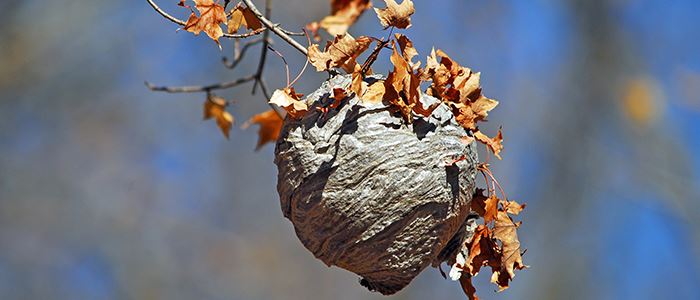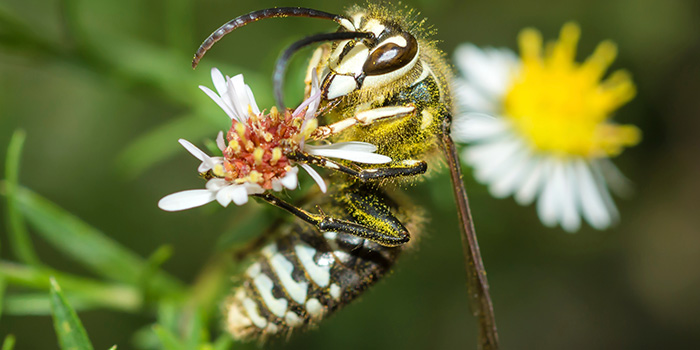Master Builders

Master Builders
By Karen Menard
Look up at the edge of the tree branches in your neighborhood or as you wander the Metropark trails this winter. You might just notice something gray and football-shaped, suspended from an outer tree branch, bouncing in the wind. It’s not a balloon, piñata, or an old holiday ornament, but an expertly crafted animal home made entirely of paper.
Mostly noticeable in the fall and winter and mainly hidden by leaves throughout the growing season, this complex structure is designed and fabricated by a small, flying insect called a bald-faced hornet (Dolichovespula maculataare).
Building this lightweight abode is no small feat. These hornets tenaciously manufacture their own weatherproof construction paper by chewing wood fiber and mixing it with the starches present in their saliva. In the early spring, queens can be seen glued to tree stumps, mandibles busily scraping away at their building material of choice-- rotting wood.
Through the season, the expanding nest essentially becomes its own, original spherical creation as female workers continue the process of adding, layering, and seaming together thin, multi-hued bands of gray, tan and cream wood pulp.
Inside the warm, dry retreat, several layers of combs are positioned horizontally and sheathed by an outer envelope of protective paper layers. The comb houses the brood cells which contain the eggs, larvae, and pupae of the colony’s next generation of female workers, male drones, and eventually, future queens.
Each fertilized queen is then tasked with a big responsibility—to continue the next generation of her species by initiating nest building and laying eggs for the entire colony. After frost, the entire colony will die and these queens are the only individuals that will survive somewhere in the protected recesses of a tree’s cavity or under dense vegetation, patiently awaiting the warmth of the spring sun.
When spring arrives, a new nest will be built and the colony will be reliant on local food sources for themselves, as well as the young. Adults generally consume flower nectar and pollen for protein and carbohydrates and are considered good pollinators. These beneficial bugs will also hunt insects, actually preferring smaller, yellow-jacket wasp prey, making them successful at keeping other, nearby wasp populations in check.
Surprisingly, these hornets are very different than the yellow and black (yellow-jacket) wasps you may encounter near garbage cans or picnic areas. They have black and white markings on their face and near the tip of their abdomen, and are not really true hornets at all--but actually more related to the yellow jacket wasp!
Overall, these insects play an important role in our ecosystems as beneficial pollinators and insect predators, keeping other, harmful insect populations controlled. As masterful builders, each of their nests is a unique, design marvel born from eons of collectively skilled insect artisans driven to continue the next generation of their species.
Did You Know?
Scientists call bald-faced hornet colonies “superorganisms” because it takes the efforts of the entire colony to reproduce itself. Individuals cannot survive on their own.
No native hornets reside in Ohio, just the European hornet (Vespa crabro), introduced in the mid-1800’s.
---

Stock photos (Bald-faced hornet covered in pollen); (Bald-faced hornet nest)